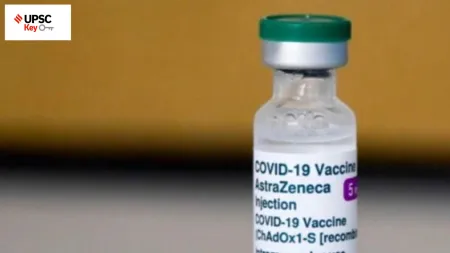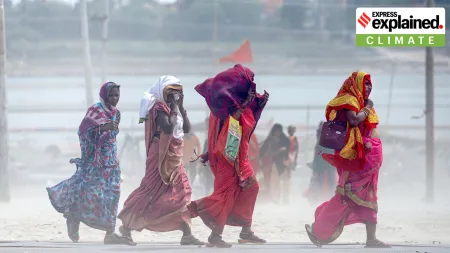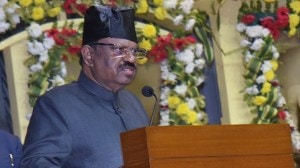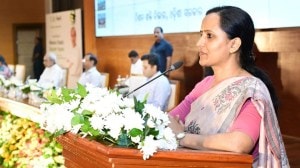- India
- International
Explained: In age of hybrid crops, the importance of preserving landraces
Rahibai Popere's Padma Shri is a recognition of her work that has helped save hundreds of landraces (wild varieties of commonly grown crops) at the village level.
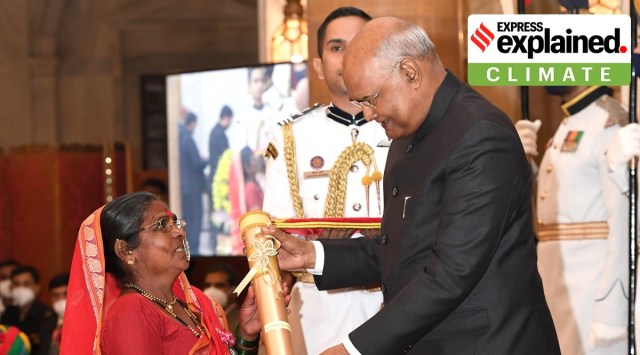 Rahibai Popere has been part of the BAIF-supported Kalsubai Parisar Biyane Sanvardhan Samajik Sanstha in Akole.(Twitter/President of India)
Rahibai Popere has been part of the BAIF-supported Kalsubai Parisar Biyane Sanvardhan Samajik Sanstha in Akole.(Twitter/President of India)Among the winners of this year’s Padma awards is Rahibai Popere, popularly known as Seedmother, from Akole taluka of Ahmednagar, Maharashtra. Her Padma Shri is a recognition of her work that has helped save hundreds of landraces (wild varieties of commonly grown crops) at the village level.
What it means
Landraces refer to naturally occurring variants of commonly cultivated crops. These are as opposed to commercially grown crops, which are developed by selective breeding (hybrids) or through genetic engineering to express a certain trait over others. With hybrid rice and wheat, for example, selective breeding over a period of time has allowed scientists to develop varieties that have higher yield or other desirable traits. Over the years, farmers have adopted these varieties.
Rajashree Joshi, programme director of Pune-headquartered BAIF Development Research Foundation, said crop improvement through selection and breeding over several decades has narrowed the genetic base of most crops. “Biodiversity allows a natural mechanism for crops to develop traits to face challenging situations. However, given the large-scale human interference in crop selection, that ability is now lost in most commercially crops,” she said.
Amid the threat of climate change, a challenge before scientists and policymakers is to develop varieties that can withstand both abiotic and biotic stresses. Naturally occurring landraces have a large pool of still untapped genetic material, which can provide solutions. “Genetic diversity is nature’s survival mechanism. The wider the gene pool, the more the chance of developing a trait that can help in surviving extreme climate events,” Joshi said.
Sanjay Patil, senior programme executive of BAIF, gave the example of kalbhat, a unique landrace of scented rice. Over the years, this variant had almost vanished from cultivators’ fields as hybrid variants became popular. It has better climate resilience than popularly grown rice and can withstand flood or drought better, Patil said. A common misconception, both Patil and Joshi said, was that landraces have lower yields than hybrids. “With proper agricultural practices, landraces can give better yield with lower input costs.”

Community-led conservation
Since 2008, BAIF has initiated a community-led programme to preserve landraces. Today, landraces survive in only a few rural and tribal pockets, but they too are depleting for want of proper conservation. Traditional knowledge about the way these need to be grown, or how seeds are to be saved, is also vanishing. BAIF’s programme involves the community in saving this rich biodiversity in their own backyard.
 In 2008, the project was started in Jawahar taluka of Palghar district; in 2014, it was expanded to Pune, Ahmednagar, Nandurbar, and Gadchiroli districts. At present, it is implemented in 94 villages in Maharashtra and also in Uttarakhand and Gujarat. It aims to identify germplasm available and, through community participation, create seed banks. Over the year, the programme has documented 595 accessions of different crops and developed five seed banks for edible crops. A morphological study of 259 crop cultivars and a molecular study of 112 crop cultivars have also been undertaken. The programme has deposited 150 landraces of paddy, finger millet, and little millet to the National Bureau Plant Genetic Resource, and received registration certificates for five sorghum varieties. A network of 5,000 seed savers has been developed.
In 2008, the project was started in Jawahar taluka of Palghar district; in 2014, it was expanded to Pune, Ahmednagar, Nandurbar, and Gadchiroli districts. At present, it is implemented in 94 villages in Maharashtra and also in Uttarakhand and Gujarat. It aims to identify germplasm available and, through community participation, create seed banks. Over the year, the programme has documented 595 accessions of different crops and developed five seed banks for edible crops. A morphological study of 259 crop cultivars and a molecular study of 112 crop cultivars have also been undertaken. The programme has deposited 150 landraces of paddy, finger millet, and little millet to the National Bureau Plant Genetic Resource, and received registration certificates for five sorghum varieties. A network of 5,000 seed savers has been developed.
Seedmother’s role
Popere has been part of the BAIF-supported Kalsubai Parisar Biyane Sanvardhan Samajik Sanstha in Akole. Working in the tribal block of Akole, this organisation has been in the forefront of the effort to save landraces of rice, little millets, hyacinth beans, finger millets and local vegetables. The Sanstha has saved 114 landraces of 40 crops. On Thursday, it was awarded the National Plant Genome Saviour Community Award. Mamatabai Bhangare, a member of the Sanstha, received the Plant Genome Saviour Farmer award.
The way forward
Joshi said much remains to be understood about the germplasms of the landraces. Research is in the early stages. It is necessary to understand how these landraces can contribute to climate-resilient agriculture; nutritional profiling too can hold the key to fighting deficiencies, as many landraces are richer in nutrients than commercially grown variants.
Newsletter | Click to get the day’s best explainers in your inbox
More Explained
EXPRESS OPINION
May 02: Latest News
- 01
- 02
- 03
- 04
- 05






